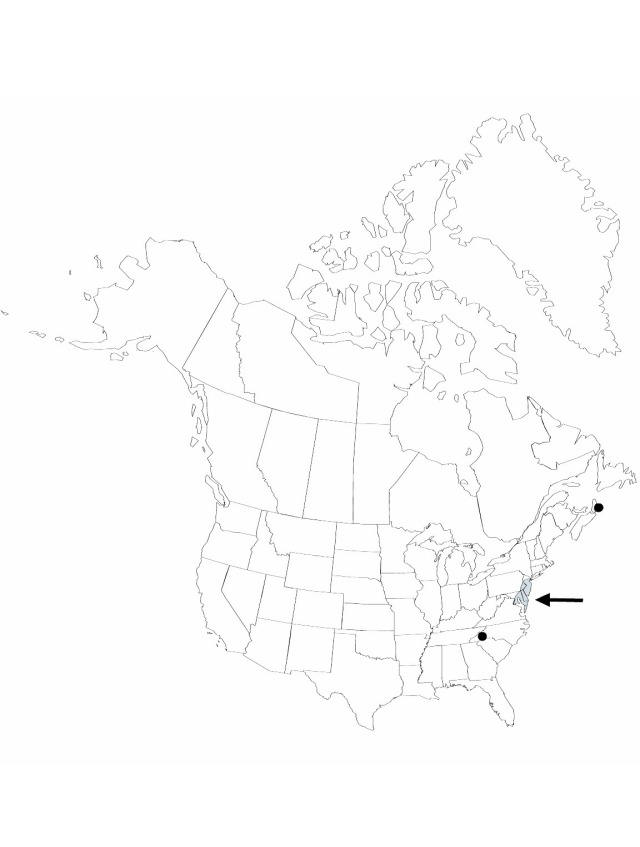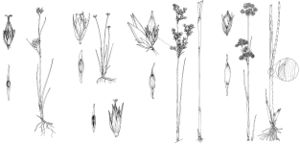Difference between revisions of "Juncus caesariensis"
Memoirs of the Torrey Botanical Club 5: 106. 1894.
imported>Volume Importer |
imported>Volume Importer |
||
| Line 58: | Line 58: | ||
|publication year=1894 | |publication year=1894 | ||
|special status=Illustrated;Endemic | |special status=Illustrated;Endemic | ||
| − | |source xml=https:// | + | |source xml=https://bitbucket.org/aafc-mbb/fna-data-curation/src/2e0870ddd59836b60bcf96646a41e87ea5a5943a/coarse_grained_fna_xml/V22/V22_482.xml |
|genus=Juncus | |genus=Juncus | ||
|subgenus=Juncus subg. Septati | |subgenus=Juncus subg. Septati | ||
Latest revision as of 20:31, 5 November 2020
Herbs, perennial, cespitose, 3–9 dm. Culms erect, 2–4 mm diam., scabrous. Cataphylls 0 or 1–2, straw-colored, apex acuminate. Leaves: basal 1–2, cauline 1–2; auricles 1–7.5 mm, apex rounded, scarious; blade terete, 4–25 cm × 1–1.8 mm, scabrous. Inflorescences panicles of 5–30 heads, 12–15 cm, erect to ascending branches; primary bract erect; heads 2–6-flowered, broadly obovoid, 5–10 mm diam. Flowers: tepals green to reddish brown, lanceolate; outer tepals 3.3–3.9 mm, apex acuminate; inner tepals 3.9–4.7 mm, acuminate; stamens 6, anthers 1/2 filament length. Capsules exserted, chestnut brown, 3-locular, ovoid, 4.5–5.3 mm, apex acuminate, valves separating at dehiscence. Seeds fusiform, 2.2–2.6 mm, tailed. ; seed body covered with whitish translucent veil.
Phenology: Fruiting mid summer–early fall.
Habitat: Wet springy bogs, swamps, and borders of wet woods
Elevation: 0–100 m
Distribution

N.S., Del., D.C., Md., N.J., N.C., Pa., Va.
Discussion
Selected References
None.
